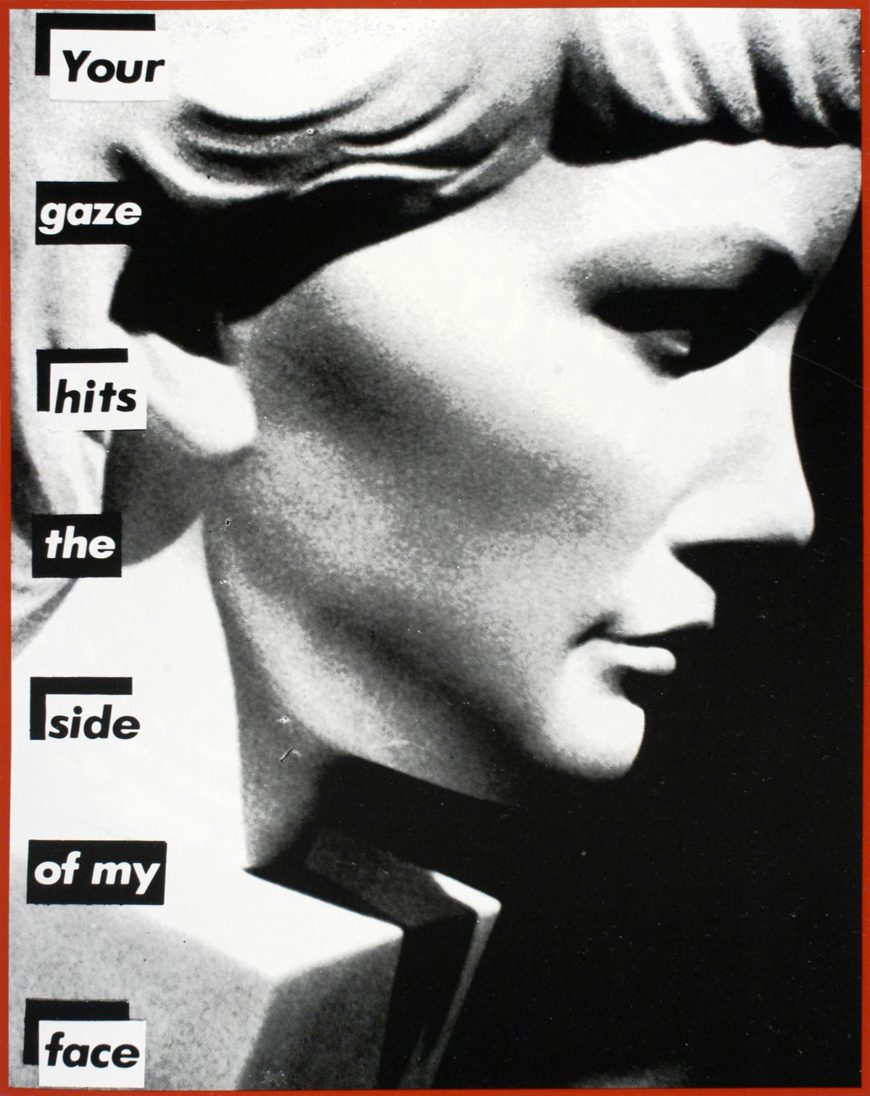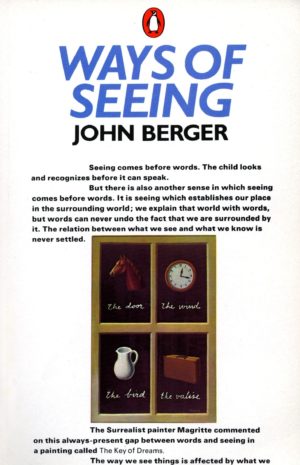Barbara Kruger, Untitled (Your gaze hits the side of my face)

Has an artwork ever been more direct in acknowledging that the simple act of looking is a gendered (and gendering) act? “Your gaze hits the side of my face,” admonishes Barbara Kruger in Untitled (1981). The phrase is made stark and impersonal by arranging the words in a vertical stack, like those of a ransom note, to the left of a photograph of a female portrait bust in profile. Notice how the head is equally depersonalized; a stylized version in the classical tradition whose neck disappears into a block of stone, the suggestion here is that women are rendered inert in the act of being looked at. With an assumed male viewer — the subject of the possessive phrase “your gaze” — the subject of the portrait bust readily conforms to patriarchal fantasies of the passive female object.

In 1981 the concept of the male gaze spelled out a crucial problematic of feminist theory. Could women truly be liberated from the objectification implied in this act of being looked at? John Berger in his 1972 book Ways of Seeing described the history of Western oil painting as a catalogue of submissive nude women arranged for the pleasure of male viewers. Kruger confronts this tradition head on. The phrase “male gaze” referenced in Kruger’s title is taken from Laura Mulvey, who coined the phrase in her 1975 essay “Visual Pleasure and Narrative Cinema,” a landmark text of feminist theory.
Kruger’s art is characterized by a visual wit sharpened in the trenches of the advertising world where the savvy combination of graphic imagery and pithy phrasing targeted a growing population of consumers in the post-World War II years. The portrait bust she uses for Untitled (Your gaze hits the side of my face) is a found picture, one of any number the artist would have encountered in her early career in graphic design. This included a stint at Mademoiselle magazine, whose glossy pages were a virtual catalogue of stereotypical images of femininity. In the late 1970s, Kruger began to choose for her photomontages images of women that were often heightened examples of such stereotypes to which her addition of text would, often humorously, expose and thereby deconstruct the supposed realism of such imagery.
Kruger offers some resistance to the objectifying gaze of the titular male viewer. Only hitting the side in Untitled (Your gaze hits the side of my face), one imagines it bouncing off as if merely ricocheting. But it nevertheless makes strategically visible the tacit assumption of Western visual traditions: women are looked at; men do the looking. In feminist terms, this means that women are negatively defined as lacking subjectivity or agency. Kruger staged an intervention, one could say, and it is in this way that her work is considered part of the feminist art canon.[1]
- Dr. Thomas Folland, "Barbara Kruger, Untitled (Your gaze hits the side of my face)," in Smarthistory, June 27, 2020, https://smarthistory.org/barbara-kruger-untitled-your-gaze-hits-side-face/ ↵

